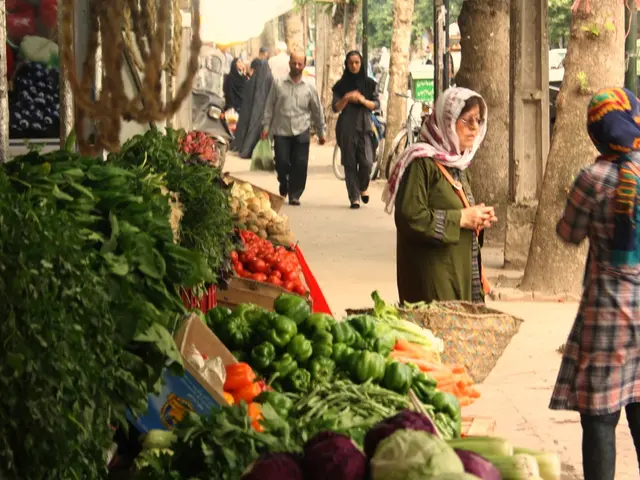Transform Your Backyard Into a Blossoming Haven for Pollinators Using These 6 Indigenous Flowering Shrubs
In the quest to support local wildlife and promote biodiversity, gardening a pollinator-friendly garden is an easy, environmentally friendly, and sustainable choice. Here are some native flowering shrubs that are not only aesthetically pleasing but also provide essential food sources for pollinators throughout the growing season.
Summersweet (Clethra alnifolia)
This North American native shrub stands out with its fragrant white or pink flowers that bloom in mid to late summer, attracting bees and butterflies. Summersweet can grow up to eight feet tall and six feet wide, making it a perfect addition to any garden.
Buttonbush (Cephalanthus occidentalis)
A shrub that produces creamy spherical flower heads, Buttonbush is highly attractive to a variety of pollinators, especially bees and butterflies. Common Buttonbush is hardy in USDA zones 5-11 and can grow up to eight feet tall and wide.
Serviceberry (Amelanchier spp.)
Early-blooming Serviceberry shrubs or small trees offer white flowers that provide nectar and pollen for early-season pollinators like native bees. Serviceberry can grow up to 25 feet tall, but pruning can keep it to a more manageable size. It is best grown in USDA zones 4-7 in slightly acidic, well-drained soil and a spot with full sun.
Bee Balm (Monarda spp.)
Native North American Bee Balm is known for its tubular flowers that attract a wide range of pollinators, particularly bees and hummingbirds. This perennial/shrub is an excellent addition to any pollinator garden.
Joe-Pye Weed (Eutrochium maculatum)
Though technically a tall perennial herbaceous plant, Joe-Pye Weed often grows shrub-like and produces large clusters of nectar-rich pink to mauve flowers favored by butterflies and bees in late summer.
Rubber Rabbitbrush (Chrysothamnus nauseosus)
Also known as chamisa, this shrub native to most of the western United States grows up to five feet tall. Rubber Rabbitbrush has gray-green threadlike leaves and fall flowers that feed pollinators after many plants stop blooming. Its flowers are yellow, small, tubular, and grow in clusters. Rubber Rabbitbrush is drought-tolerant, tolerates dry soil, heavy winds, and can be grown in USDA zones 4-9.
Apache Plume (Fallugia paradoxa)
Apache Plume is a showy flowering shrub native to the southwestern United States, growing up to six feet tall. This semi-evergreen shrub attracts pollinators with its white flowers that transform into large, fluffy seedheads. Apache Plume is drought-tolerant and well-suited for xeriscaping gardens.
Winterberry (Ilex verticillata)
A deciduous native holly, Winterberry attracts butterflies, bees, and birds and is native to most of the eastern United States and Canada.
By incorporating these native flowering shrubs into your garden, you're not only creating a beautiful and thriving ecosystem but also contributing to the support of native bees, whose population is vital and unique to North America. For region-specific recommendations or more detailed plant lists, resources like Xerces Society’s Pollinator-Friendly Plant Lists and local native plant societies can provide tailored guidance.
Incorporating native flowering shrubs such as Summersweet, Buttonbush, Serviceberry, Bee Balm, Joe-Pye Weed, Rubber Rabbitbrush, Apache Plume, and Winterberry into your home-and-garden can significantly improve your lifestyle by supporting local wildlife, promoting biodiversity, and creating a beautiful and thriving ecosystem, even in a home-and-garden setup focused on home-and-garden aesthetics. These garden choices also provide resources like nectar and pollen for essential pollinators throughout the growing season.




